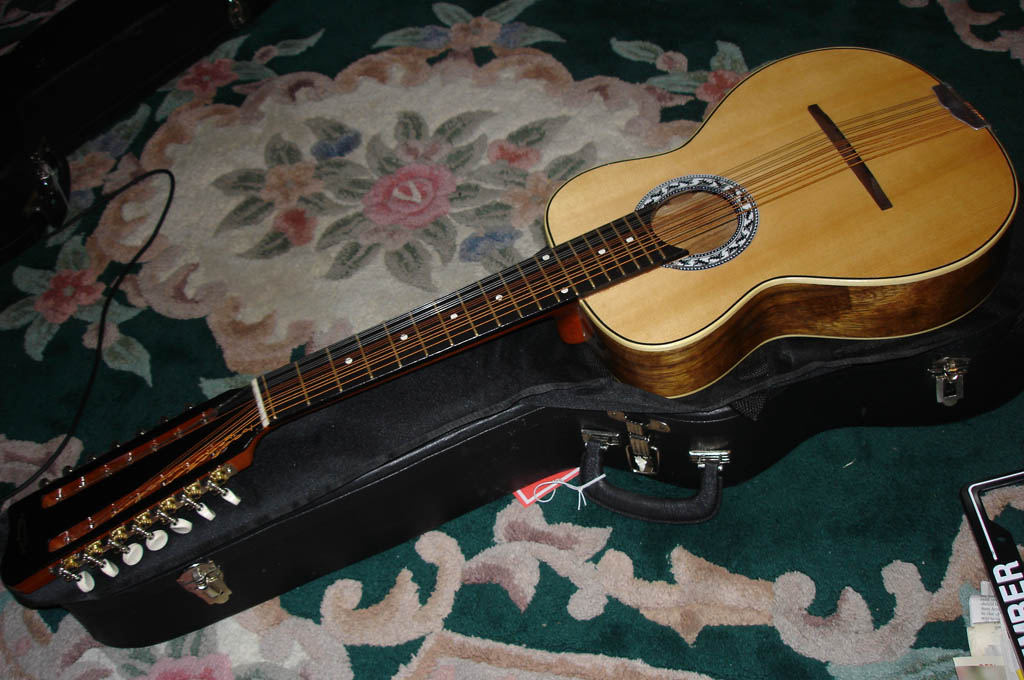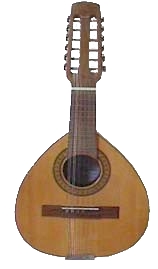Thursday 30 July 2015
Friday 10 July 2015
Philippine Rondalla
During the Spanish period in the East Indies, the rondalla was brought to the Philippines by the Spaniards. In the early Philippines, certain styles were adopted by the natives, especially guitar and banduria used in the Pandanggo, the Jota, and the Polka. The use of the term comparza was common, however, during the American period in the Philippines, the term rondalla became more used. At present, rondalla, in the Philippines, refers to any group of stringed instruments that are played using the plectrum or pick.[4]The Filipino instruments are made from indigenous Philippine wood and the plectrum, or picks, are made from tortoise-shell. Other stringed instruments composing the standard Filipino rondalla are the bandurria, the laúd, the octavina, the Twelve-string guitar, the Ukulele, the bajo de uñas or double bass, the Guitarrón mexicano, and other Filipino-made instruments modeled and developed after the guitar. The Philippine rondalla’s repertoire include folk songs such as the collar de sampaguita, la bella filipina, No te vayas a Zamboanga, Balitaw, the Kundiman, the "Zarzuela", the "Subli", the "Harana", the "Tinikling", and the "Cariñosa".
https://en.wikipedia.org/wiki/Rondalla#Philippines
The bandurria plucked chordophone from Spain, primarily used in Spanish Folk music, but also found in countries that were once colonies of Spain.
The modern bandurria has 12 strings (6 pairs). The strings are tuned in unison pairs, going up in fourths from the low G#. The lowest four strings are a major-third above those of a standard guitar and the highest two strings are a fourth above a standard guitar, i.e. G♯, c♯, f♯, b, e and a.

Laúd is a plectrum-plucked similar to the bandurria, but with a longer neck.
Traditionally it is used by folk string musical groups, such as the Filipino Rondalla string ensemble, together with the guitar and the bandurria. Like the bandurria, it is tuned in fourths, but its range is one octave lower.
The Filipino version has (from bass to treble) one single course, two double courses and three triple courses (i.e. fourteen strings), and is tuned a step lower, F# B E A D G.

The octavina or Philippine octavina is a guitar-shaped Filipino instrument with a tuning similar to the Laud. Originally a Spanish instrument, the octavina was soon incorporated into other cultures, notably including Filipino culture.
The Octavina has a set of 14 string in 6 courses: 6th-single, 5th-double, 4th-double, 3rd-triple, 2nd-triple and 1st-triple.It is numbered starting from the bottom. It is tuned similarly to that of the bandurria, but one octave lower, giving:
- 1st: G (sol)
- 2nd: G (sol)
- 3rd: G (sol)
- 4th: D (re)
- 5th: D (re)
- 6th: D (re)
- 7th: A (la)
- 8th: A (la)
- 9th: A (la)
- 10th: E (mi)
- 11th: E (mi)
- 12th: B (si)
- 13th: B (si)
- 14th: F# (fi)
Bajo de Uñas- a bass guitar which looks like a big guitar and is played by a
plectrum. It plays the bass part and serves as a rhythmic support.
plectrum. It plays the bass part and serves as a rhythmic support.
Harana (Spanish ‘jarana’) – serenade; traditionally sung by a young man to a
young woman outside the young woman’s house as a profession of his love
to her. usually accompanied by a guitar.
to her. usually accompanied by a guitar.
Kumintang- originally a war song, this song in triple time can be of any topic:
love, resentment, or a social commentary. It can also be a dance or a
combination of song and dance in this style.
Kundiman (kung hindi man) – an art song about the love of a man for a
woman but can also be about patriotic sentiments, the woman as an object of
love and sacrifice of the man representing the Philippines whose countrymen
are willing to do sacrifices for freedom. It usually starts in a minor key and
then goes to the major key.
Polka- a lively dance in duple time.
Pandanggo- originating from the fandango of Spain, it is a fast-paced dance
in triple time. Usually, dancers use accessories such as hats and lighted
candle in a glass
Rondalla- an ensemble of plucked instruments and sometimes with
percussion
Bandurria- 14-stringed pear-shaped lute with a round sound hole and played
with a plectrum, it plays the melody in the rondalla ensemble.
Laud- 14-stringed pear-shaped lute with f-shaped sound holes and played
with a plectrum, it plays the alto part or counter melody in the rondalla
ensemble. It is bigger than the bandurria.
with a plectrum, it plays the alto part or counter melody in the rondalla
ensemble. It is bigger than the bandurria.
Octavina- 14-stringed lute which is shaped like a small guitar and played with
a plectrum, it plays a counter melody or harmony fill-in in the rondalla
ensemble.
a plectrum, it plays a counter melody or harmony fill-in in the rondalla
ensemble.
Bajo de Uñas- a bass guitar which looks like a big guitar and is played by a
plectrum. It plays the bass part and serves as a rhythmic support.
plectrum. It plays the bass part and serves as a rhythmic support.
Subscribe to:
Posts (Atom)




